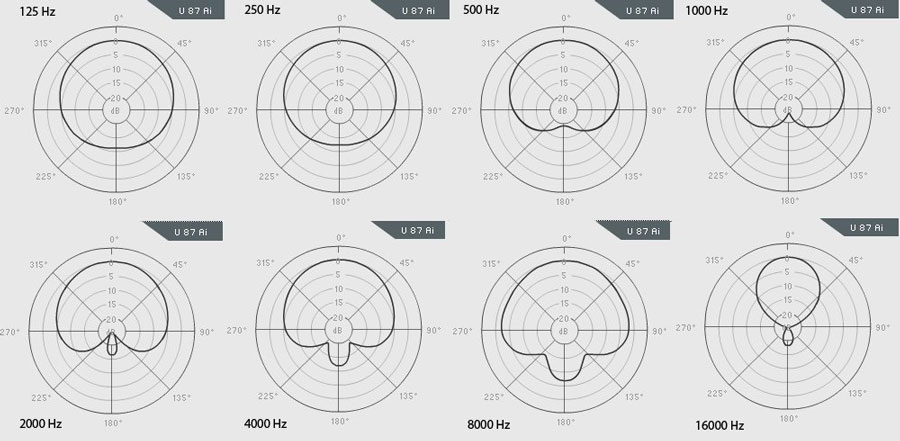Condenser microphones come in two main types: large diaphragm and small diaphragm. The characteristics of each one should inform the decision on which to use.
Large diaphragm microphones were created first, their sizable diaphragm offering a very low noise floor. Later, the small diaphragm came when engineers could create quiet enough transistors. Small diaphragms usually have excellent transient response, an extended high frequency range, and have very consistent pickup patterns. Most of the frequencies hitting the mic come in at a cardioid shape.
Large diaphragm mics have some drawbacks to their design but are often appealing for vocalists for several reasons, one of which is the aforementioned pickup patterns. For large diaphragms, the polar pattern for frequencies below 1Khz tends to be more omnidirectional; frequencies above 4Khz tend to become more hyper and super cardioid shapes. Those discrepancies tend to help vocalists have a more rounded sound and is the prefered choice, with rare exceptions.
Above, you can see the cardioid frequency response pattern of the Neumann U 87A large diaphragm condenser.









There are 0 comments